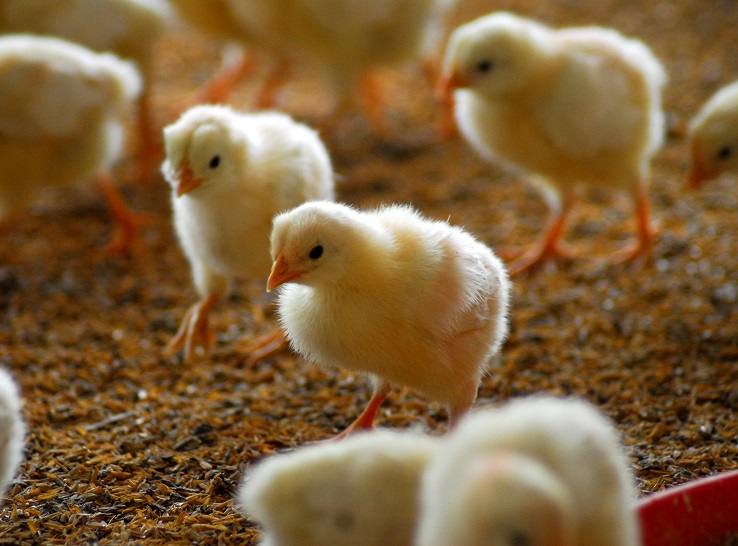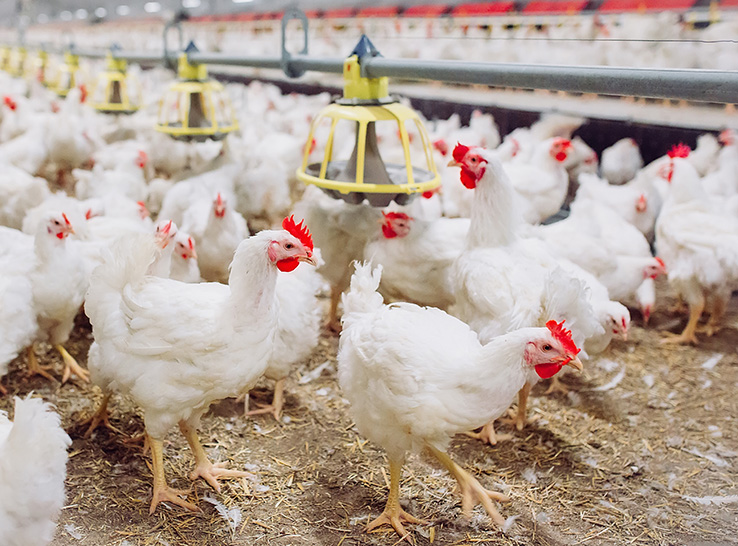Increased activity in broilers can reduce kinky back — a spinal deformity that can affect mobility in fast-growing chicks between 3 and 6 weeks of age.
According to Leonie Jacobs, PhD, associate professor at Virginia Tech, kinky back — or spondylolisthesis, as it’s called in clinical circles — can cause lameness, imbalance and, in severe cases, paralysis.
Exploring ways to reduce kinky back in broilers was the subject of a recent article, “Kinky back in broiler chickens: What we can do today to reduce the problem,” which Jacobs co-authored with Virginia Tech School of Animal Sciences graduate student Marconi Italo Lourenco da Silva.
Typically, only 2% of the flock show severe symptoms of kinky back, resulting in euthanasia. However, 15% to 60% of the flock can have subclinical cases of spinal cord compression, Jacobs notes.
Decreasing spondylolisthesis occurrence
“The prevalence of subclinical spondylolisthesis and the possible development to clinical cases can be reduced by providing environmental resources that increase complexity,” the authors say.
A 2023 research project led by Lourenco da Silva found that enriched environments stimulate the birds’ activity, providing opportunities for birds to exercise and walk more than they would without the introduced items.
“Stimulating activity and exploratory behaviors, particularly in 3- to 4-week-old pullets, leads to muscle and bone development, enabling the birds to better cope with their weight,” Jacobs notes.
In this project, investigators introduced step platforms, hay bales and laser lights to pullet houses to encourage activity. Laser lights and hay bales stimulated exploratory behaviors like chasing and pecking, while the platforms provided opportunities for the chicks to jump up and down.
Comparing the birds in the enriched environments with those in a control group that didn’t have access to the platform, bales or laser lights, the researchers discovered that the step platforms were most effective in reducing subclinical kinky back. The control group showed 56% of the flock with subclinical kinky back. However, kinky back was noted in 48% of the flock with access to hay bales, 29% with laser light enrichment and only 21% of the flock with the step platform.
“A combination of these resources, or other resources that increase the complexity of environments, stimulating a range of normal behaviors and activity may reduce the prevalence of subclinical spondylolisthesis even further,” Jacobs reports.
Environmental complexity can reduce prevalence of subclinical spondylolisthesis
There isn’t a magic answer to eliminating kinky back in fast-growing broilers because genetics, nutrition and environmental factors all play a role in this deformity, the authors explain.
However, the study found making houses more interesting and stimulating natural exploratory behaviors lead to increased activity which strengthens the birds’ musculoskeletal systems. In particular, access to multi-tiered structures and simple platforms during critical development at 3 to 4 weeks of age reduces spinal cord compression, providing an easy win for the chicks and the producers.





